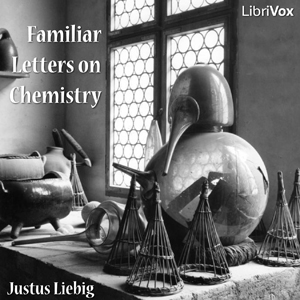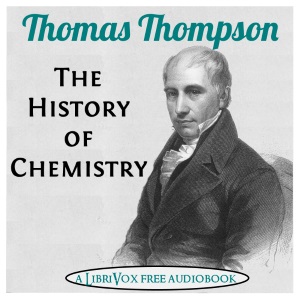Justus von Liebig (1803-1873) was a German chemist who made major contributions to agricultural and biological chemistry and is known for his discovery of nitrogen as an essential plant nutrient. These letters “were written for the especial purpose of exciting the attention of governments, and an enlightened public, to the necessity of establishing Schools of Chemistry, and of promoting by every means, the study of a science so intimately connected with the arts, pursuits, and social well-being of modern civilised nations.” (Summary by Wikipedia and J.M. Smallheer)
17 episodes
A fascinating look back at the state of the art of chemistry 100 years ago, this book by James C. Philip, PhD, an assistant professor of chemistry at The Imperial College of Science and Technology, Kensington, provides a "description in non-technical language of the diverse and wonderful way which chemical forces are at work, and their manifold application in modern life" in 1910. Professor Philip relates many of the key chemical discoveries of early academic researchers in the context of the practical uses to which these discoveries were applied in the early 20th century. (summary by J. M. Smallheer)
31 episodes
Marie Curie, born in Warsaw in 1867, was a Polish-French physicist and chemist famous for her work on radioactivity. She was a pioneer in the field of radioactivity and the first person honored with two Nobel Prizes - in physics (1903) and chemistry (1911). The risks of working with strongly radioactive materials were not known at that time, and she eventually died in 1934 from an illness likely caused by radiation poisoning.
Radioactive Substances is the thesis of Marie Curie, presented to the Faculté de Sciences de Paris in 1903, and subsequently published in "Chemical News" vol 88, 1903. Marie Curie gives a detailed description of her research on radioactive substances carried out at the Sorbonne. She details how she obtained the two new elements radium and polonium from pitchblende, explains her numerous experiments and presents measurements of all kinds. (Summary by Availle)
12 episodes

Slosson reviews the transformation of alchemistry from an obscure and imprecise practice to the science of chemistry. Along the way, he explains how the modern industrial world now relies on fertilizers, explosives, textile materials, polymers and metals.By exploring the properties of a once undervalued element, the high strength of vanadium steel made the Ford car possible. Another element, cerium, appears in butane lighters and was once seen as a threat to the match industry in France.In his chapter on oils, Slosson reviews the development of hydrogenated oils, especially during WWII, in the search for a way to reuse otherwise discarded components of corn and cottonseed. Through the revolutionary reaction of hydrogenation, waste materials became a stable product that wouldn't spoil when packaged or carried without refrigeration. Once thought of as a miracle, shoppers were once willing to pay more for fully hydrogenated oils than their natural, unsaturated forms. Only in recent years has evidence of health risks checked their popularity and given them the image of cheap, unhealthy fillers. (Summary by LivelyHive)
17 episodes
Origin and progress of chemistry, from its beginnings in alchemy into the early 19th century including history and characters of important contributors to the science. (Summary by Sienna)
69 episodes




